Resident Crews of the International Space Station (ISS)
![]()
ISS: Expedition 41 |
 |
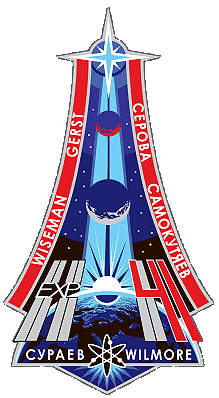 |
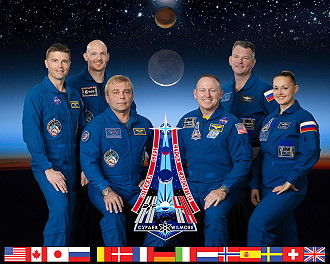 |
alternative crew photo |
|
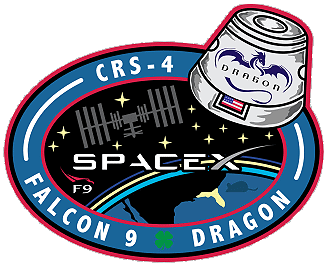 |
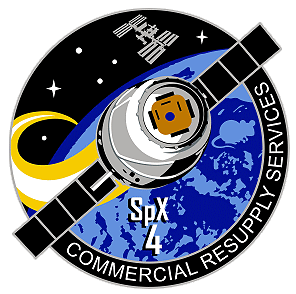 |
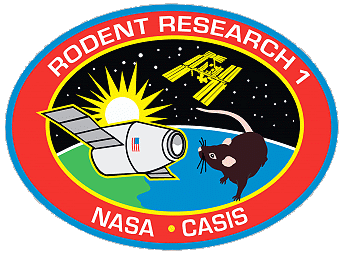 |
![]()
Crew, launch- and landing data
| No. | Nation | Surname | Given names | Position | Spacecraft (launch) |
Launch date |
Launch time |
Spacecraft (landing) |
Landing date |
Landing time |
Mission duration |
Orbits |
| 1 | Surayev | Maksim Viktorovich | ISS-CDR | Soyuz TMA-13M | 28.05.2014 | 19:57:40.981 UTC | Soyuz TMA-13M | 10.11.2014 | 03:58:49.8 UTC | 165d 08h 01m 09s | 2566 | |
| 2 | Samokutyayev | Aleksandr Mikhailovich | Flight Engineer-1 | Soyuz TMA-14M | 25.09.2014 | 20:24:59.939 UTC | Soyuz TMA-14M | 12.03.2015 | 02:07:40.1 UTC | 167d 05h 42m 40s | 2599 | |
| 3 | Serova | Yelena Olegovna | Flight Engineer-2 | Soyuz TMA-14M | 25.09.2014 | 20:24:59.939 UTC | Soyuz TMA-14M | 12.03.2015 | 02:07:40.1 UTC | 167d 05h 42m 40s | 2599 | |
| 4 | Wilmore | Barry Eugene "Butch" | Flight Engineer-3 | Soyuz TMA-14M | 25.09.2014 | 20:24:59.939 UTC | Soyuz TMA-14M | 12.03.2015 | 02:07:40.1 UTC | 167d 05h 42m 40s | 2599 | |
| 5 | Wiseman | Gregory Reid | Flight Engineer-5 | Soyuz TMA-13M | 28.05.2014 | 19:57:40.981 UTC | Soyuz TMA-13M | 10.11.2014 | 03:58:49.8 UTC | 165d 08h 01m 09s | 2566 | |
| 6 | Gerst | Alexander | Flight Engineer-6 | Soyuz TMA-13M | 28.05.2014 | 19:57:40.981 UTC | Soyuz TMA-13M | 10.11.2014 | 03:58:49.8 UTC | 165d 08h 01m 09s | 2566 |
unofficial Backup Crew
| No. | Nation | Surname | Given names | Position |
| 1 | Shkaplerov | Anton Nikolayevich | ISS-CDR | |
| 2 | Padalka | Gennadi Ivanovich | Flight Engineer | |
| 3 | Korniyenko | Mikhail Borisovich | Flight Engineer | |
| 4 | Kelly | Scott Joseph | Flight Engineer | |
| 5 | Cristoforetti | Samantha | Flight Engineer | |
| 6 | Virts | Terry Wayne, Jr. | Flight Engineer |
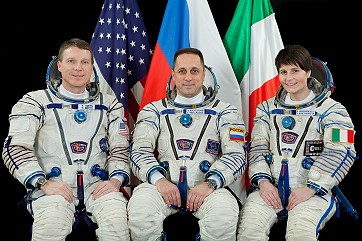 |
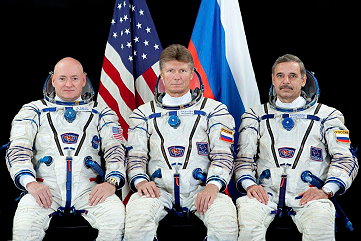 |
 |
Expedition Report
|
Launch from the Baikonur Cosmodrome (Aleksandr
Samokutyayev, Yelena
Serova and Barry
Wilmore with
Soyuz
TMA-14M). Maksim
Surayev, Reid
Wiseman and Alexander
Gerst were onboard since May 29, 2014 (arrival with
Soyuz
TMA-13M). ISS Expedition 41 began with the undocking of spacecraft Soyuz TMA-12M on September 10, 2014 at 23:01:30 UTC. The former Expedition 40 (Aleksandr Skvortsov, Oleg Artemyev and Steven Swanson) returned safely to Earth. With the arrival of Soyuz TMA-14M on September 26, 2014 the Expedition 41 became a six-person-crew. Soyuz TMA-14M carried Aleksandr Samokutyayev, Yelena Serova and Barry Wilmore to the space station. The Dragon CRS-4 or SpX-4 commercial cargo craft has completed a two-day trip to the International Space Station after launching on the company's Falcon 9 rocket from Space Launch Complex-40 at Cape Canaveral Air Force Station in Florida at 05:52:03 UTC September 21, 2014. Reid Wiseman and Alexander Gerst were at the controls of the robotics workstation in the Cupola when the Canadarm2 grappled Dragon at 10:52 UTC on September 23, 2014 and berthed to the Harmony node on September 23, 2014 at 13:21 UTC. Later, the crew successfully opened the Dragon hatch and ingressed the vehicle. About 5,000 pounds (2,268 kg) of NASA science investigations were aboard SpaceX's Dragon spacecraft. One of the new Earth science investigations heading to the orbital laboratory is the International Space Station-Rapid Scatterometer. ISS-RapidScat monitors ocean winds from the vantage point of the space station. This space-based scatterometer is a remote sensing instrument that uses radar pulses reflected from the ocean's surface from different angles to calculate surface wind speed and direction. This information will be useful for weather forecasting and hurricane monitoring. Dragon also will deliver the first-ever 3-D printer in space. The technology enables parts to be manufactured quickly and cheaply in space, instead of waiting for the next cargo resupply vehicle delivery. New biomedical hardware launched aboard the spacecraft will help facilitate prolonged biological studies in microgravity. The Rodent Research Hardware and Operations Validation (Rodent Research-1) investigation provides a platform for long-duration rodent experiments in space. These investigations examine how microgravity affects animals, providing information relevant to human spaceflight, discoveries in basic biology and knowledge that may have direct impact toward human health on Earth. The first spacewalk in this expedition was performed by Reid Wiseman and Alexander Gerst on October 07, 2014 (6h 13m). The astronauts moved a failed cooling pump from temporary to long-term storage on the station's truss. They also installed a new relay system that will provide backup power options to the mobile transporter, which moves the large robotic arm around the out outside of the space station. Reid Wiseman and Barry Wilmore ventured out the International Space Station for the second EVA on October 15, 2014 (6h 34m). The two-man team replaced a sequential shunt unit electronics box, a voltage regulator, on the starboard truss that failed in mid-May. Although the station has since operated normally on seven of its eight power channels, the voltage regulator replacement is considered a high priority. The third EVA in Expedition 41 war a Russian spacewalk and performed by Aleksandr Samokutyayev and station Commander Maksim Surayev on October 22, 2014 (3h 38m). The cosmonauts removed and jettisoned several pieces of hardware no longer needed on the Russian segment of the station and conducted a detailed photographic survey of the exterior surface of the Russian modules. After delivering almost 5,000 pounds (2,268 kg) of supplies and experiments to the International Space Station during a month-long stay, the SpaceX Dragon cargo spacecraft left the orbital laboratory on October 25, 2014 at 13:56 UTC. The Dragon spacecraft was detached from the Earth-facing side of the station's Harmony module and unberthed through commands sent by robotic ground controllers in mission control at NASA's Johnson Space Center in Houston operating the Canadarm2 robotic arm. Mission control maneuvered Dragon into place then turned it over to Expedition 41 robotic arm operators Reid Wiseman and Barry Wilmore for release. Space station and SpaceX officials delayed Dragon's departure four days from the originally scheduled date of October 21, 2014 because of high sea states in the splashdown and recovery zone west of Baja California. It returned about 3,276 pounds (1,486 kg) of cargo, including science samples from human research, biology and biotechnology studies, physical science investigations and education activities sponsored by NASA and the Center for the Advancement of Science in Space, the nonprofit organization responsible for managing research aboard the U.S. national laboratory portion of the space station. The capsule splashed down on October 25, 2014 at 19:39 UTC 480 km west of Baja California. Progress M-24M left the International Space Station on October 27, 2014. The unpiloted Russian cargo spacecraft arrived at the orbiting laboratory in July 2014 and undocked from the space station's Pirs docking compartment at 05:38:24 UTC. Upon leaving the ISS, the cargo spacecraft would be taking part in a scientific experiment until November 19, 2014 to study the impact of its engines on the plasma in the Earth's ionosphere. At 23:46UTC the freighter entered the atmosphere and was destroyed over the South Pacific. Orbital Sciences Corp. attempted to launch its next mission to resupply the International Space Station on October 28, 2014 at 22:22:38 UTC from the Mid-Atlantic Regional Spaceport's Launch Pad 0A at NASA's Wallops Flight Facility in Virginia. The Antares rocket making only its fifth flight exploded seconds after launch from the Virginia coast, erupting in a spectacular fireball and destroying an uncrewed Cygnus cargo ship in a disheartening failure for NASA's commercial space station resupply program. The mishap occurred about 15 seconds after liftoff from the Mid-Atlantic Regional Spaceport at NASA's Wallops Island Flight Facility as the 139-foot-tall (42.4 meters) two-stage rocket climbed away on the power of its two Russian-built first-stage engines. Continuing the tradition of naming its spacecraft after astronauts who have made significant contributions to spaceflight, Orbital dubbed this Cygnus resupply ship the SS Deke Slayton. The name is a tribute to original Mercury 7 astronaut Donald "Deke" K. Slayton, who flew on the Apollo-Soyuz Test Project (ASTP) mission in 1975 and championed commercial space endeavors after retiring from NASA in 1982. Donald Slayton passed away in 1993. Cygnus was filled with almost 5,000 pounds of supplies, including science experiments, crew provisions, spare parts and experiment hardware. The Progress M-25M resupply ship launched at 07:09:42 UTC October 29, 2014 from the Baikonur Cosmodrome in Kazakhstan, with 2,350 kg of food, fuel and supplies for the station's Expedition 41 crew. Progress M-25M made its four-orbit, six-hour trip to the space station and docked with the Pirs docking compartment at 13:08:14 UTC. Seedling growth, observation of meteors entering Earth's atmosphere and studies of animal biology and bone and muscle physiology define the research of Expedition 41. Model organisms, such as plant seedlings and small fish, traveling to the space station will help advance our body of scientific knowledge about the influence of microgravity on cells. Model organisms are non-human species with characteristics that allow them easily to be maintained, reproduced and studied in a laboratory. Taking these organisms to space allows for examination of growth and development and physiological, psychological and aging processes without the impact of gravity. Biological Research in Canisters-19 (BRIC-19): BRIC hardware has supported a variety of plant growth investigations aboard the space station. The new BRIC-19 investigation will focus on the growth and development of Arabidopsis thaliana seedlings in microgravity. A. thaliana is a small flowering plant related to cabbage. Researchers hope to get a better understanding of how the growth responses of plants are altered by growth in microgravity. The seedlings will be preserved and returned to the ground for evaluation. While the BRIC hardware helps to maximize research and minimize space and crew time, it also adds to the collective body of knowledge about basic plant growth phenomena and may help improve growth and biomass production to benefit farming practices on Earth. Meteor Composition Determination (Meteor): Meteor is a new space station payload that will enable the first space based observations of meteors entering Earth's atmosphere from space. Meteors are somewhat rare and are difficult to monitor from the ground because of Earth's atmosphere. Meteor uses high-resolution video and image analysis of the atmosphere to ascertain the physical and chemical properties of the meteoroid dust, such as size, density and chemical composition. Since scientists usually identify the parent comets or asteroids for most meteor showers, the study of the meteoroid dust from the space station provides information about the parent comets and asteroids. Investigating the elemental composition of meteors adds to our understanding of how the planets developed, and continuous measurement of meteor interactions with Earth's atmosphere could spot previously unforeseen meteors. Effects of Gravity on Maintenance of Muscle Mass in Zebrafish (Zebrafish Muscle): The Zebrafish Muscle investigation will observe the effects of microgravity on the zebrafish, Danio rerio, a tropical freshwater fish belonging to the minnow family. The goal of the study is to determine whether zebrafish muscles weaken in microgravity similarly to human muscles, and if so, isolate the cause. Results from the Zebrafish Muscle investigation may help identify molecular changes involved in the deterioration of muscles exposed to microgravity. This data can help scientists develop new treatments for weakened muscles. The findings could potentially benefit patients on extended bed rest or with limited mobility. In addition, this information would aid researchers in developing countermeasures for muscle weakness in astronauts living in microgravity during extended missions. Osteocytes and mechano-transduction (Osteo-4): The Osteo-4 study examines the effects of microgravity on the function of osteocytes, the most common cells in bone. These cells reside within the mineralized bone and can sense mechanical forces; but researchers do not know how. This study allows, for the first time, direct analysis of the changes in the physical appearance and genetic expression of bone cells in mice living in microgravity aboard the space station. This investigation may significantly advance the knowledge of the role of mechanical forces, or lack thereof, on osteocyte functions and further enhance understanding of these cells. Results derived from this study could have significant implications for treatment of bone disorders related to disuse or immobilization such as osteopenia (low bone density), osteoporosis or even paralysis. This may also assist researchers in developing additional mechanisms to combat bone density loss in crew members living aboard the space station. Finally, the station command changed from Russian cosmonaut Maksim Surayev to US astronaut Barry Wilmore. With undocking of Soyuz TMA-13M, carrying Maksim Surayev, Reid Wiseman and Alexander Gerst, on November 10, 2014 at 00:31:29 UTC the Expedition 41 concluded and the new ISS Expedition 42 began. During the stay on board of the ISS the crews of Expeditions 41 / 42 carried out the following scientific experiments: 3D Printing In Zero-G (3D Printing In Zero-G Technology Demonstration) 3DA1 Camcorder (Panasonic 3D Camera) ACE-H-1 (Advanced Colloids Experiment-Heated-1) ACE-H-2 (Advanced Colloids Experiment-Heated-2) ACE-M-3 (Advanced Colloids Experiment-Microscopy-3) AES-1 (Antibiotic Effectiveness in Space-1) AIRWAY MONITORING (AIRWAY MONITORING) AMO-TOCA (Autonomous Mission Operations TOCA Autonomous Operations Project) AMS-02 (Alpha Magnetic Spectrometer - 02) APEX-03-1 ( Advanced Plant EXperiments 03-1) APEX-03-2 TAGES-Isa (Transgenic Arabidopsis Gene Expression System - Intracellular Signaling Architecture) Amine Swingbed (Amine Swingbed) Aniso Tubule (Roles of cortical microtubules and microtubule-associated proteins in gravity-induced growth modification of plant stems) Area PADLES (Area Passive Dosimeter for Life-Science Experiments in Space) Astro Palate (Factors Contributing to Food Acceptability and Consumption, Mood and Stress on Long-Term Space Missions) BCAT-C1 (Binary Colloidal Alloy Test - C1) BP Reg (A Simple In-flight Method to Test the Risk of Fainting on Return to Earth After Long-Duration Space Flights) BRIC-19 (Biological Research in Canisters-19 ) Biochem Profile (Biochemical Profile) Bioculture System Validation (Bioculture System) Biological Rhythms 48hrs (The effect of long-term microgravity exposure on cardiac autonomic function by analyzing 48-hours electrocardiogram) Bisphosphonates (Bisphosphonates as a Countermeasure to Space Flight Induced Bone Loss) Blind and Imagined (SLINK: move Short bLind plus shrink - Moving blind and throwing an imagery ball) Body Measures (Quantification of In-Flight Physical Changes - Anthropometry and Neutral Body Posture) CALET (CALorimetric Electron Telescope) CARTILAGE (CARTILAGE) CATS (Cloud-Aerosol Transport System) CEO (Crew Earth Observations) CFE-2 (Capillary Flow Experiment - 2) CREAM (Cosmic Ray Energetics and Mass) Cardio Ox (Defining the Relation Between Biomarkers of Oxidative and Inflammatory Stress and Atherosclerosis Risk in Astronauts During and After Long-duration Spaceflight) Cell Mechanosensing-2 (Cell Mechanosensing-2) Check-Saliva (Salivary Markers of Metabolic Changes during Space Missions) Circadian Rhythms (Circadian Rhythms) Cognition (Individualized Real-Time Neurocognitive Assessment Toolkit for Space Flight Fatigue) Comm Delay Assessment (Assessing the Impact of Communication Delay on Behavioral Health and Performance: An Examination of Autonomous Operations Utilizing the International Space Station) Cyclops Demo (Cyclops Hardware Validation Demonstration) DECLIC DSI-R (DEvice for the study of Critical LIquids and Crystallization - Directional Solidification Insert-Reflight) DECLIC HTI-R (DEvice for the study of Critical LIquids and Crystallization - High Temperature Insert-Reflight) DOSIS-3D (Dose Distribution Inside the International Space Station - 3D) DTN (Disruption Tolerant Networking for Space Operations) Drain Brain (Strain-gauge Plethysmographic Analysis of the CErebral DRainage Experimented and Assessed in the Micro-gravitational Setting) Drug Metabolism (Repurposing Metformin as an anti-cancer agent: microgravity studies in Saccharomyces cerevisiae) Dynamic Surf (Experimental Assessment of Dynamic Surface Deformation Effects in Transition to Oscillatory Thermo capillary Flow in Liquid Bridge of High Prandtl Number Fluid) EPO-Demos (Education Payload Operation-Demonstrations) ESA-EPO-GERST (European Space Agency - Education Payload Operations GERST) EXHAM-CFRP Mirror (Space Environmental Testing of Lightweight and High-Precision Carbon Composite Mirrors) EXHAM-Solar Sail (Space Environment Exposure Tests of Functional Thin-Film Devices for Solar Sail) Embryo Rad (Lifetime Heritable Effect of Space Radiation on Mouse embryos Preserved for a long-term in ISS) Energy (Astronaut's Energy Requirements for Long-Term Space Flight) Exerc-Orthostatic Tolerance (Structured Exercise Training as Countermeasure to Space Flight-Induced Orthostatic Intolerance) FLEX-2 (Flame Extinguishment Experiment - 2) Fluids Education (Fluids Education) Force Shoes (In-flight Demonstration of Portable Load Monitoring Devices-Phase I: XSENS ForceShoe™) Functional Task Test (Physiological Factors Contributing to Postflight Changes in Functional Performance) HDEV (High Definition Earth Viewing) HREP-HICO (HICO and RAIDS Experiment Payload - Hyperspectral Imager for the Coastal Ocean) HREP-RAIDS (HICO and RAIDS Experiment Payload - Remote Atmospheric and Ionospheric Detection System (RAIDS)) HiMassSEE (Spacecraft Single Event Environments at High Shielding Mass) IMAX (IMAX Documentary film: A PERFECT PLANET) ISERV (ISS SERVIR Environmental Research and Visualization System) ISS Ham Radio (International Space Station Ham Radio) ISS-RapidScat (ISS-RapidScat) IVA Clothing Study (Intravehicular Activity Clothing Study) Intervertebral Disc Damage (Risk of Intervertebral Disc Damage after Prolonged Space Flight) JAXA PCG (Japan Aerospace Exploration Agency Protein Crystal Growth) JAXA-Commercial (Japan Aerospace Exploration Agency - Commercial Payload Program) Journals (Behavioral Issues Associated with isolation and Confinement: Review and Analysis of Astronaut Journals) Kikuchi-Kossel (Structure analyses and particle interaction studies of Colloid by laser diffractometry in microgravity) LONESTAR (Low Earth Orbiting Navigation Experiment for Spacecraft Testing Autonomous Rendezvous and Docking) MAXI (Monitor of All-sky X-ray Image) MCE (Multi-mission Consolidated Equipment) METERON (METERON Quick Start a / DTN) MICAST-2 (The Microstructure Formation in Casting of Technical Alloys under Diffusive and Magnetically Controlled Convective Conditions-2) MISSE-8 FSE (MISSE-8 FSE) MVIS Controller-1 (MVIS Controller 1) Manual Control (Assessment of Operator Proficiency Following Long-Duration Space Flight) Marangoni-UVP (Spatio-temporal Flow Structure in Marangoni Convection) Meteor (Meteor Composition Determination) Microbe-IV (Microbiological monitoring in the International Space Station-KIBO) Microbiome (Study of the Impact of Long-Term Space Travel on the Astronauts' Microbiome) Multi-Gas Monitor (Multi-Gas Monitor) NIH-Osteo (Gravitational Regulation of Osteoblast Genomics and Metabolism) NanoRacks-COBRA PUMA GOLF-Electroplating (NanoRacks-COBRA PUMA GOLF-Electroplating) NanoRacks-Duchesne Light Wavelengths on Algae Production (NanoRacks-Duchesne-Algae Production in Microgravity with Variable Wavelengths of Light) NanoRacks-Food Growth Chamber (NanoRacks-Plant Viability for Food Growth Chamber) NanoRacks-Lipid Mimic Self-Assembly (NanoRacks-Self-Assembly of Mesoscopic Lipid Mimics) NanoRacks-Micro-gRx (NanoRacks-Fluorescent Polarization in Microgravity) NanoRacks-NanoRocks (NanoRacks-NanoRocks: Collisional Evolution of Particles and Aggregates in Microgravity) NanoRacks-PCG Therapeutic Discovery (NanoRacks-Protein crystal growth in microgravity to enable therapeutic discovery) NanoRacks-Planet Labs-Dove (NanoRacks-Planet Labs-Dove) NanoRacks-Slime Mold (NanoRacks-Slime Mold Organization) Nematode Muscles (Alterations of C. elegans muscle fibers by microgravity) NeuroMapping (Spaceflight Effects on Neurocognitive Performance: Extent, Longevity, and Neural Bases) OPALS (Optical PAyload for Lasercomm Science) Ocular Health (Prospective Observational Study of Ocular Health in ISS Crews) Osteo-4 (Osteocytes and mechano-transduction) PK-4 (Plasma Krystall-4) PS-TEPC (Establishment of dosimetric technique in the International Space Station (ISS) with Position Sensitive Tissue Equivalent Proportional Chamber) Plant Gravity Sensing 1 (Utilization of the micro gravity condition to examine the cellular process of formation of the gravity sensor and the molecular mechanism of gravity sensing) Plant Gravity Sensing-2 (Utilization of the micro gravity condition to examine the cellular process of formation of the gravity sensor and the molecular mechanism of gravity sensing) Plant Rotation (Plant circumnutation and its dependence on the gravity response) Pro K (Dietary Intake Can Predict and Protect Against Changes in Bone Metabolism during Spaceflight and Recovery) RRM-Phase 2 (Robotic Refueling Mission Phase 2) Radi-N2 (Radi-N2 Neutron Field Study) Radiation Environment Monitor (Radiation Environment Monitor) Repository (National Aeronautics and Space Administration Biological Specimen Repository) Robonaut (Robonaut) Rodent Research-1 (Rodent Research Hardware and Operations Validation) Rodent Research-1 (CASIS) (Muscle Atrophy of Muscle Sparing in Transgenic Mice) Rodent Research-2 (NASA #1) ( Rodent Research-2 (NASA #1) Impact of Spaceflight on Primary and Secondary Antibody Responses) Rodent Research-2 (NASA #2) ( Rodent Research-2 (NASA #2) Implications for Elevated Intracranial Pressure) SCAN Testbed (Space Communications and Navigation Testbed) SEDA-AP (Space Environment Data Acquisition Equipment - Attached Payload) SNFM (Serial Network Flow Monitor) SPHERES-Slosh (SPHERES-Slosh) SPHERES-Zero-Robotics (Synchronized Position Hold, Engage, Reorient, Experimental Satellites-Zero-Robotics) STP-H4-ATT (Space Test Program-Houston 4-Active Thermal Tile) STP-H4-FireStation (Space Test Program-Houston 4-FireStation) STP-H4-GLADIS (Space Test Program - Houston 4 - Global Awareness Data-Exfiltration International Satellite) STP-H4-ISE 2.0 (Space Test Program-Houston 4-ISS SpaceCube Experiment 2.0) STP-H4-MARS (Space Test Program-H4-Miniature Array of Radiation Sensors) STP-H4-SWATS (Space Test Program-Houston 4- Small Wind and Temperature Spectrometer) Salivary Markers (The Effects of Long-Term Exposure to Microgravity on Salivary Markers of Innate Immunity) Sally Ride EarthKAM (Sally Ride Earth Knowledge Acquired by Middle School Students) Seedling Growth-2 (Seedling Growth-2) Skin-B (Skin-B) Solar-SOLACES (Sun Monitoring on the External Payload Facility of Columbus - SOLar Auto-Calibrating EUV/UV Spectrophotometers) Solar-SOLSPEC (Sun Monitoring on the External Payload Facility of Columbus -Sun Monitoring on the External Payload Facility of Columbus -SOLar SPECtral Irradiance Measurements) Space Aging (Study of the effects of space flight on the aging of C. elegans) Space Headaches (Space Headaches) Space Pup (Effect of space environment on mammalian reproduction) SpinSat (SpinSat) Sprint (Integrated Resistance and Aerobic Training Study) Stem Cells (Study on the Effect of Space Environment to Embryonic Stem Cells to Their Development) Story Time From Space (Story Time From Space) Synergy (The elucidation of the re-adaptation on the attitude control after return from long term space flight) T-Cell Act in Aging (T-Cell Activation in Aging) TripleLux-B (Gene, Immune and Cellular Responses to Single and Combined Space Flight Conditions - B) UBNT (Ultrasonic Background Noise Test) V-C REFLEX (Plastic alteration of vestibulo-cardiovascular reflex and its countermeasure) VIABLE ISS (eValuatIon And monitoring of microBiofiLms insidE International Space Station) Vessel ID System (Vessel ID System) Wearable Monitoring (Wearable System for Sleep Monitoring in Microgravity) Windows on Earth (Windows on Earth) Zebrafish Muscle (Effects of the gravity on maintenance of muscle mass in zebrafish). |
EVA data
| Name | Start | End | Duration | Mission | Airlock | Suit | |
| EVA | Wiseman, Reid | 07.10.2014, 12:30 UTC | 07.10.2014, 18:43 UTC | 6h 13m | ISS-41 | ISS - Quest | EMU No. 3010 |
| EVA | Gerst, Alexander | 07.10.2014, 12:30 UTC | 07.10.2014, 18:43 UTC | 6h 13m | ISS-41 | ISS - Quest | EMU No. 3003 |
| EVA | Wiseman, Reid | 15.10.2014, 12:16 UTC | 15.10.2014, 18:50 UTC | 6h 34m | ISS-41 | ISS - Quest | EMU No. 3010 |
| EVA | Wilmore, Barry | 15.10.2014, 12:16 UTC | 15.10.2014, 18:50 UTC | 6h 34m | ISS-41 | ISS - Quest | EMU No. 3003 |
| EVA | Samokutyayev, Aleksandr | 22.10.2014, 13:28 UTC | 22.10.2014, 17:06 UTC | 3h 38m | ISS-41 | ISS - Pirs | Orlan-MK No. 6 |
| EVA | Surayev, Maksim | 22.10.2014, 13:28 UTC | 22.10.2014, 17:06 UTC | 3h 38m | ISS-41 | ISS - Pirs | Orlan-MK No. 5 |
Photos
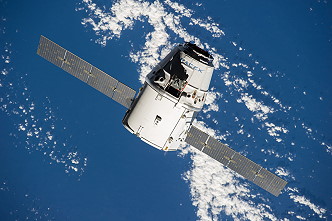 |
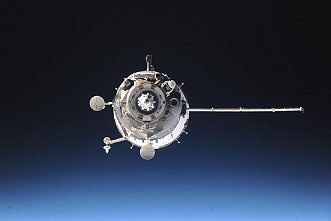 |
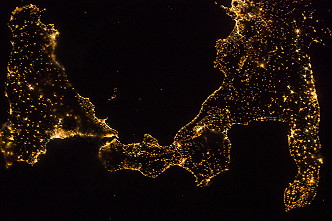 |
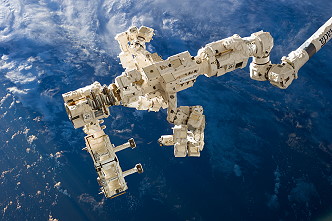 |
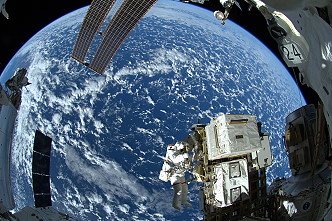 |
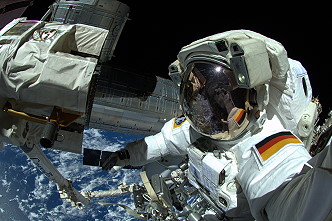 |
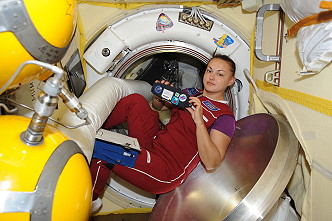 |
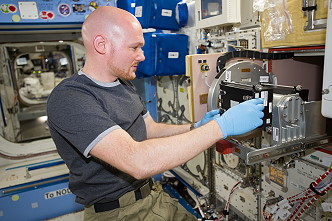 |
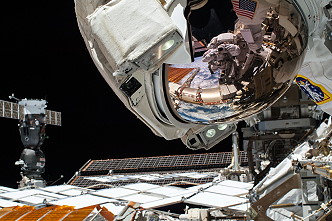 |
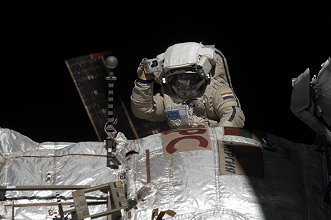 |
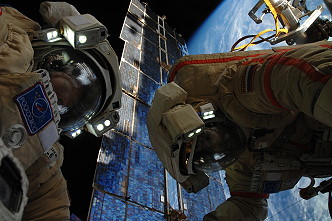 |
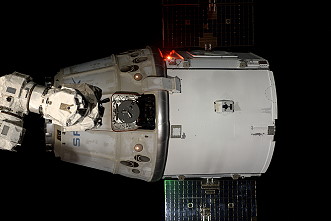 |
 |
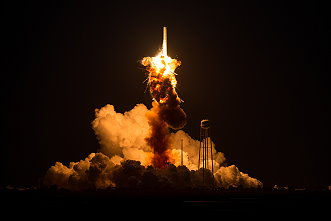 |
more EVA photos |
|
Earth observation photos |
|
more onboard photos |
|
| © |  |
Last update on December 15, 2020.  |
 |